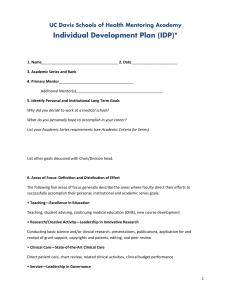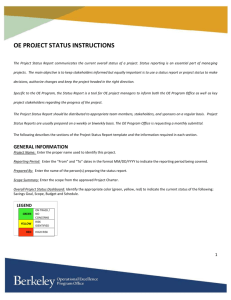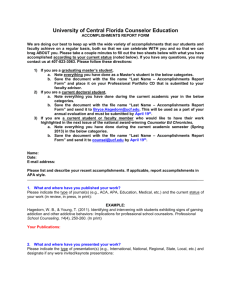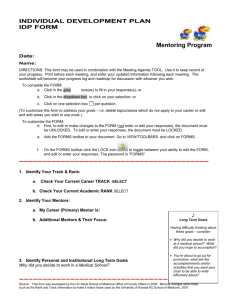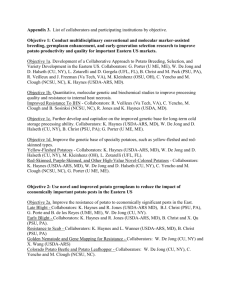Individual Development Plan (IDP)
advertisement
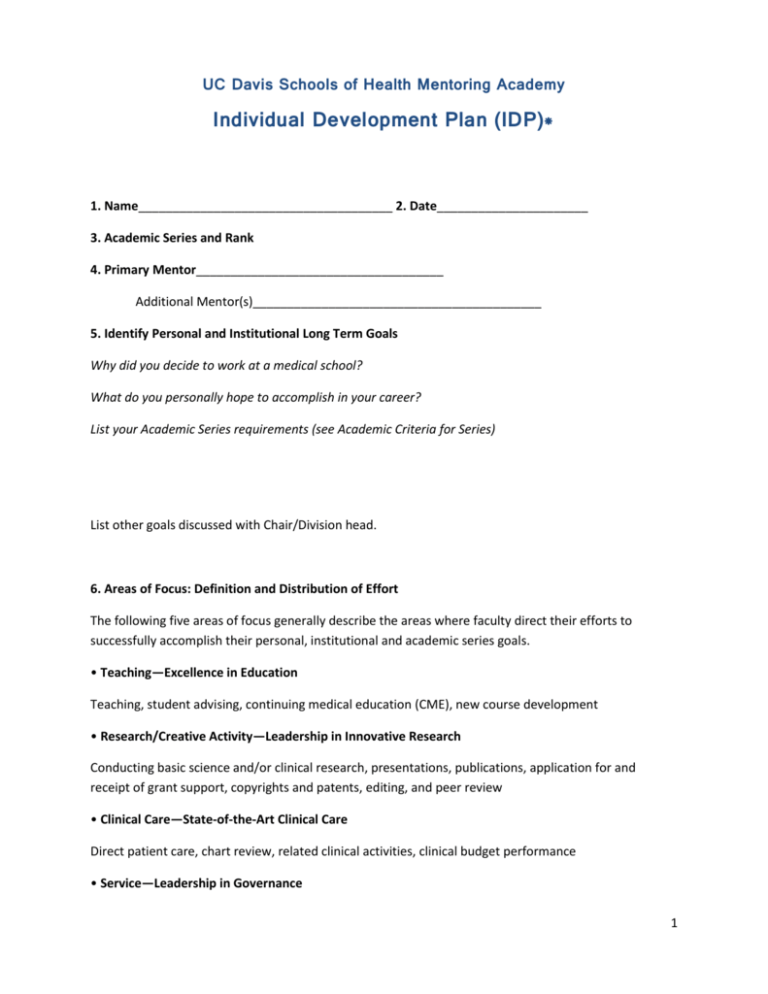
UC Davis Schools of Health Mentoring Academy Individual Development Plan (IDP)* 1. Name_____________________________________ 2. Date______________________ 3. Academic Series and Rank 4. Primary Mentor____________________________________ Additional Mentor(s)__________________________________________ 5. Identify Personal and Institutional Long Term Goals Why did you decide to work at a medical school? What do you personally hope to accomplish in your career? List your Academic Series requirements (see Academic Criteria for Series) List other goals discussed with Chair/Division head. 6. Areas of Focus: Definition and Distribution of Effort The following five areas of focus generally describe the areas where faculty direct their efforts to successfully accomplish their personal, institutional and academic series goals. • Teaching—Excellence in Education Teaching, student advising, continuing medical education (CME), new course development • Research/Creative Activity—Leadership in Innovative Research Conducting basic science and/or clinical research, presentations, publications, application for and receipt of grant support, copyrights and patents, editing, and peer review • Clinical Care—State-of-the-Art Clinical Care Direct patient care, chart review, related clinical activities, clinical budget performance • Service—Leadership in Governance 1 Participation or leadership in governance, committee membership, collegial activities. Suggested service priority: Department, SOM, UCDHS, University, Professional, Community • Self Development—Networking, Work-Life Balance and Additional Mentors Faculty Development activities, leadership programs, CME training, earning advanced degrees, participation in professional academic associations or societies, developing professional contacts, consulting in one’s field, expanding network contacts, balancing work and personal life, utilizing additional mentors in specific areas of focus Distribution of Effort Estimate the hours per week spent in each focus area, then list the percentage of total duties. 7. Specific Goals in Focus Areas Complete the focus areas that specifically apply to the criteria for your academic series that will help you accomplish your personal and institutional long- term goals. Teaching Year in Review: Please list last year’s goal(s) and significant accomplishments (teaching appointments, invitations, course or program improvements, etc.). If the goals were not met, explain and identify barriers. Upcoming year’s teaching goal(s): Identify resources, collaborators, and time commitment needed to achieve goal(s): Identify barriers to achieving new goal(s): Research and Research Related/Creative Activities Year in Review: Please list last year’s goal(s) and significant accomplishments (major publications, grants, presentations, invitations, etc.). If the goals were not met, explain and identify barriers. Identify in a single sentence the focus of your scholarly activity. Upcoming year’s research goal(s): Identify resources, collaborators, and time commitment needed to achieve goal(s): Identify barriers to achieving new goal(s): Clinical Care 2 Year in Review: Please list last year’s goal(s) and significant accomplishments (exceptional patient care, development of new techniques, clinical programs, etc.). If the goals were not met, explain and identify barriers. Upcoming year’s patient care goal(s): Identify resources, collaborators, and time commitment needed to achieve goal: Identify barriers to achieving new goals: Service Recommended service priority: Department, School, University, Professional, and Community. Year in Review: Please list last year’s goal(s) and significant accomplishments. If the goals were not met, explain and identify barriers. Upcoming year’s administration goal(s): Identify resources, collaborators, and time commitment needed to achieve goal: Identify barriers to achieving new goal(s): Self-Development (Networking, Work-Life Balance, Additional Mentors) Year in Review: Please list year’s goal(s) and significant accomplishments. If the goal were not met, explain and identify barriers. Upcoming year’s self-development goal(s): Identify resources, collaborators, and time commitment needed to achieve goal(s): Identify barriers to achieving new goal(s): 8. Optimal Distribution of Effort Revisit the table, “Distribution of Effort,” in step 6. Create a new Optimal Distribution of Effort table, taking into account your specific goals listed in step 7. 9. We have met and discussed this annual Individual Development Plan (IDP) Mentee_________________________________________ Date____________________ Mentor_________________________________________ Date_____________________ *Adapted from IDP form presented by Russell G. Robertson MD, Medical College of Wisconsin, 2004 AAMC Faculty Affairs Professional Development Conference. 3
